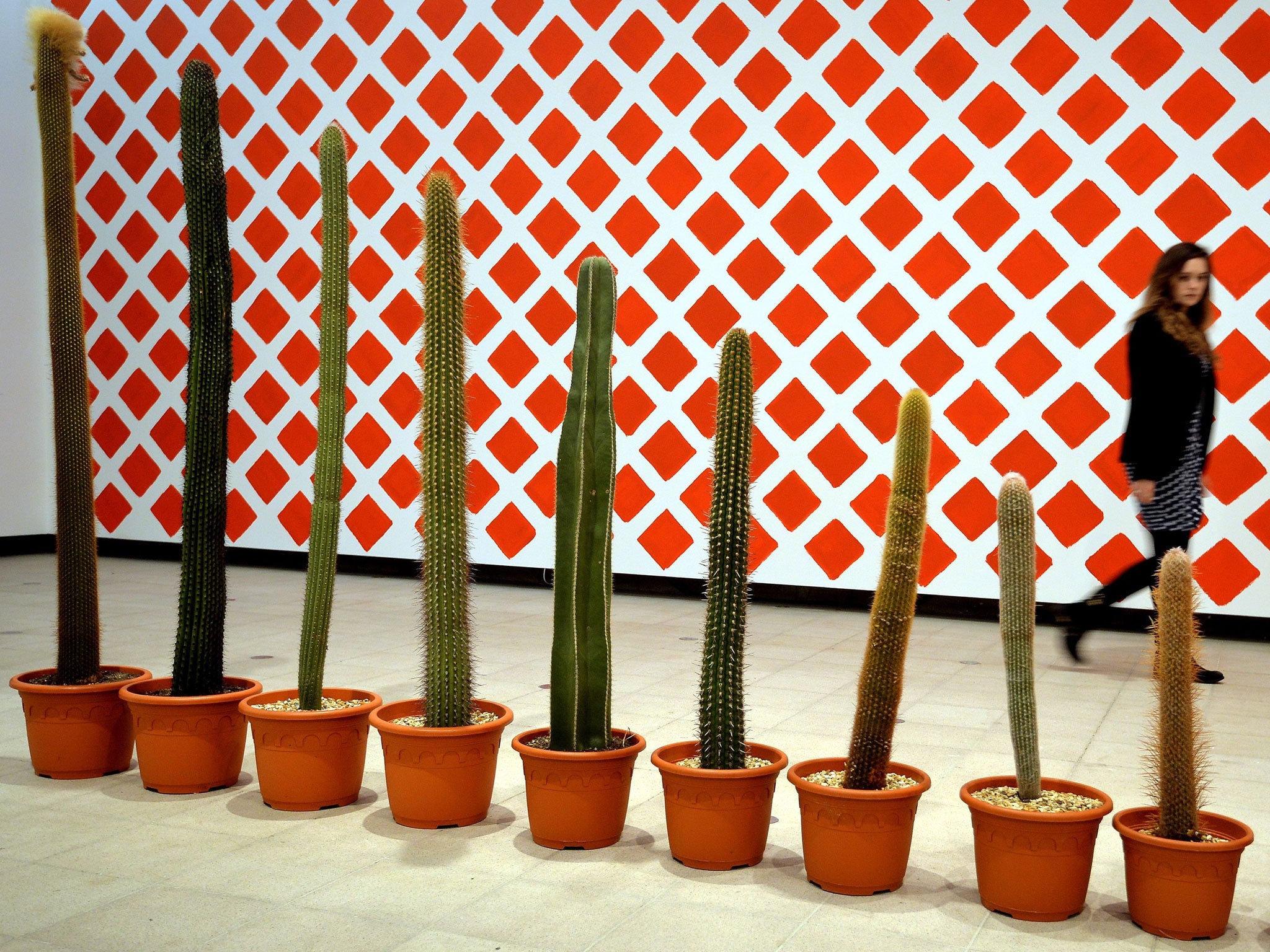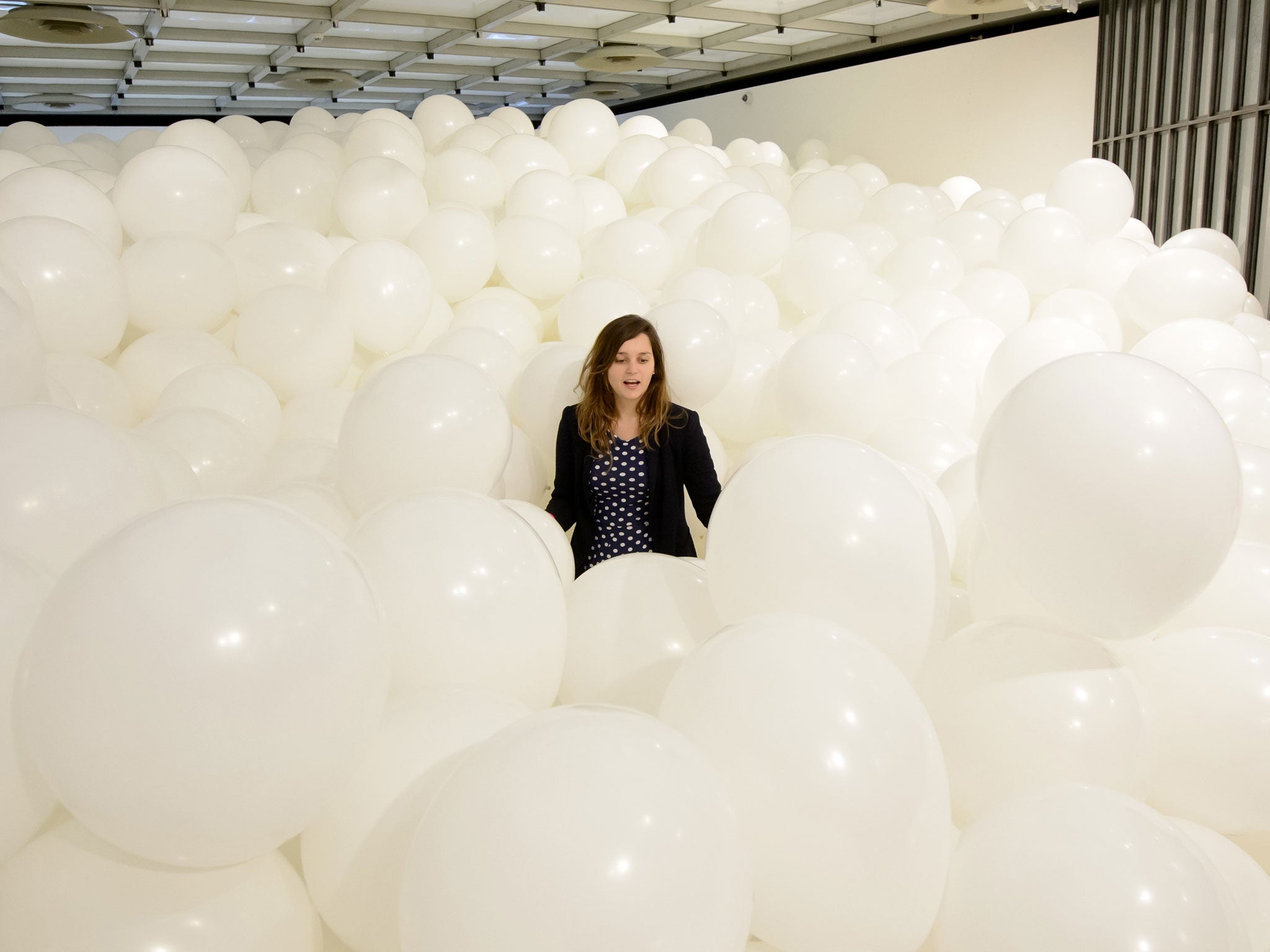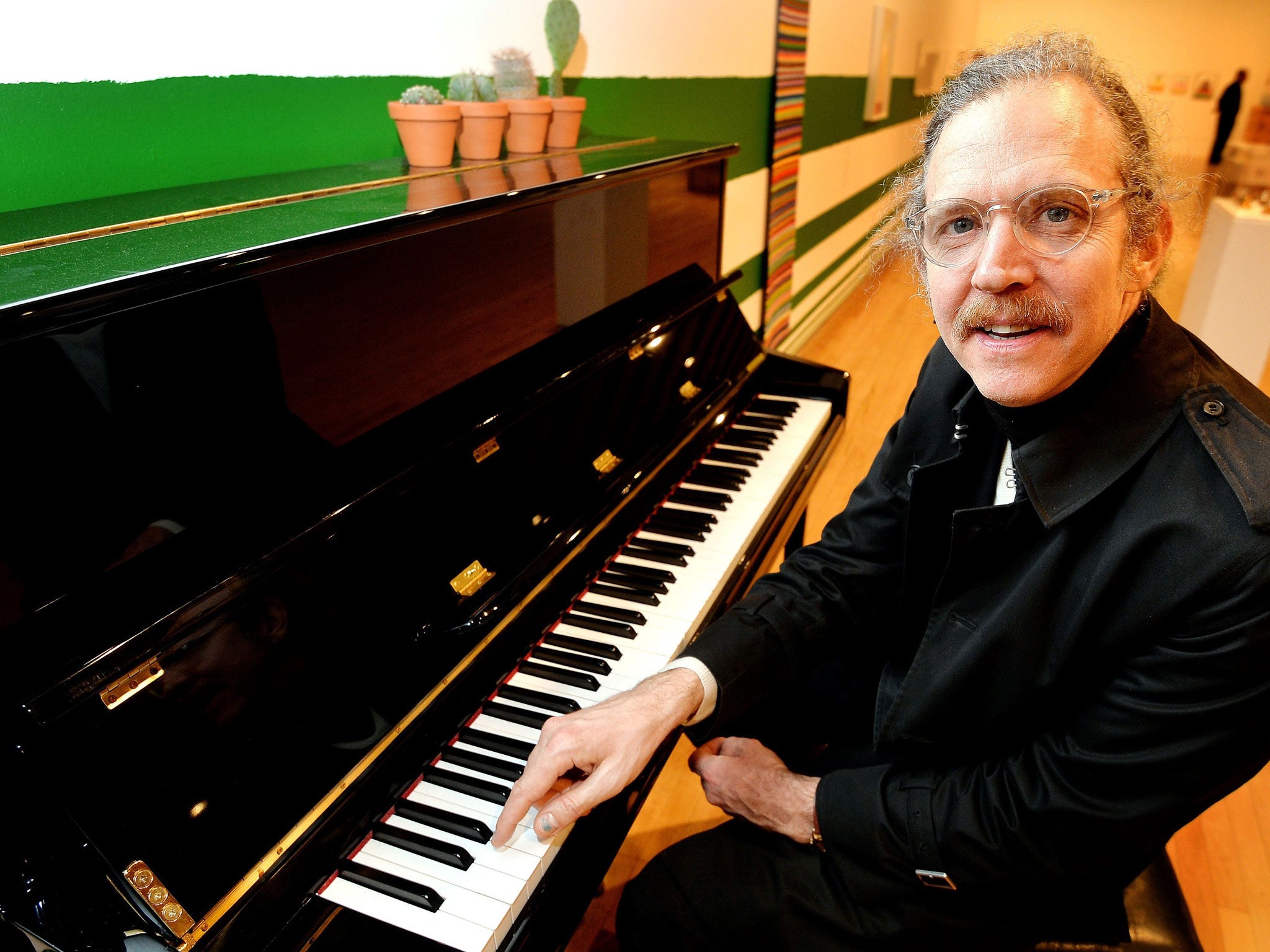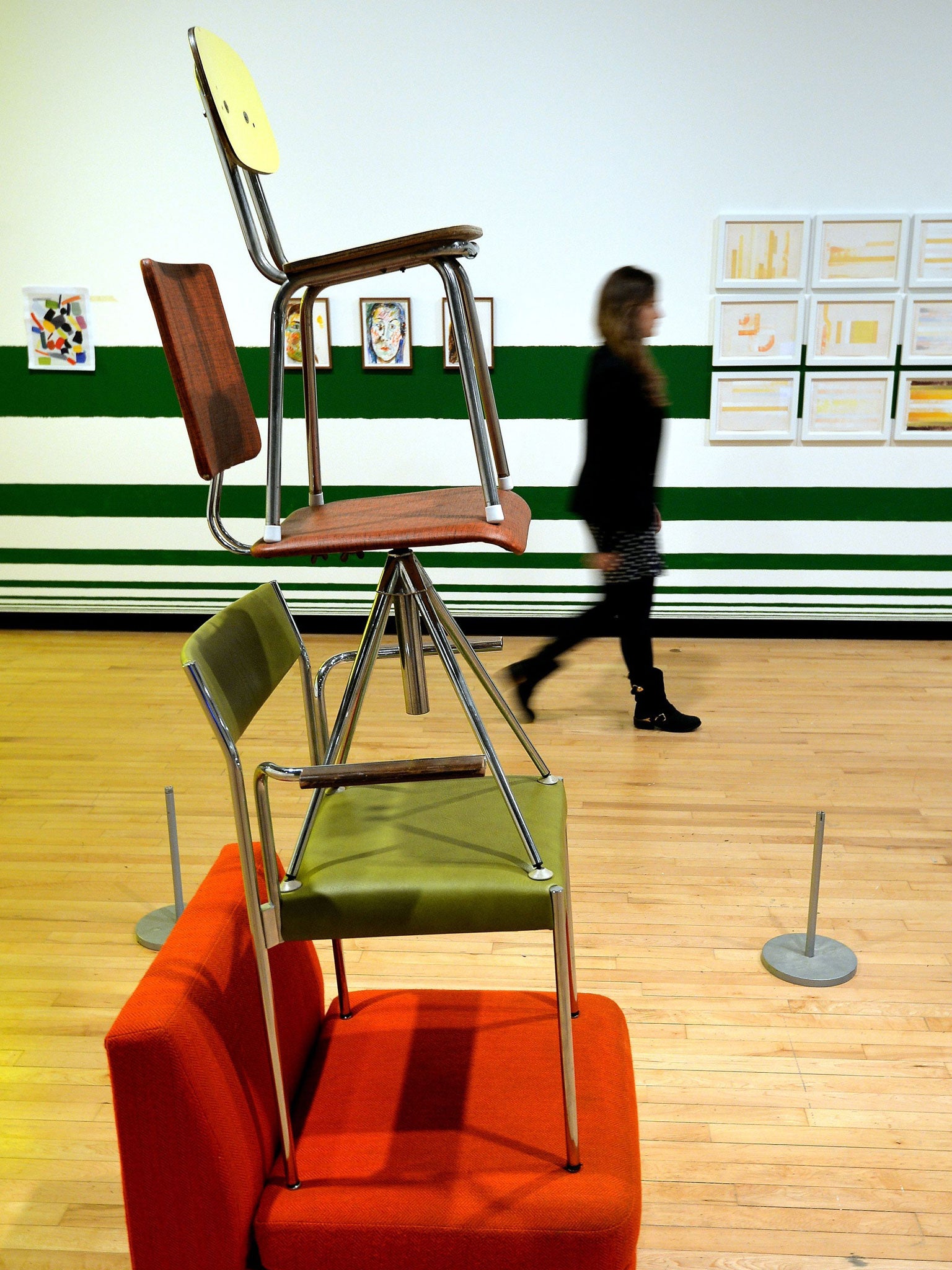Actually, there is a point to Martin Creed
The Hayward Gallery’s What Is the Point of It? is the first major retrospective of the Turner Prize-winning minimalist. His quirky works can be both entertaining and exasperating, but they’re always full of surprises, discovers Adrian Hamilton

Your support helps us to tell the story
From reproductive rights to climate change to Big Tech, The Independent is on the ground when the story is developing. Whether it's investigating the financials of Elon Musk's pro-Trump PAC or producing our latest documentary, 'The A Word', which shines a light on the American women fighting for reproductive rights, we know how important it is to parse out the facts from the messaging.
At such a critical moment in US history, we need reporters on the ground. Your donation allows us to keep sending journalists to speak to both sides of the story.
The Independent is trusted by Americans across the entire political spectrum. And unlike many other quality news outlets, we choose not to lock Americans out of our reporting and analysis with paywalls. We believe quality journalism should be available to everyone, paid for by those who can afford it.
Your support makes all the difference.People tend to like Martin Creed. Although some derisory press comments were made when he won the Turner Prize in 2001 with an installation called The lights going on and off in which the lights did nothing but that in an empty room, there’s always been something playful about his output that warms as well as engages the viewer.
You can see it all set out in the expansive retrospective of Creed that has just opened at the Hayward Gallery. The artist, now in his mid-forties, has named it What’s the Point of It?, a title he’s obviously rather pleased with. But then he goes on to say that he doesn’t know the answer or indeed what “It” is.
In other artists this self-mockery might seem tedious. But in Creed’s case it reflects an approach to art that is as self-questioning as asking of the onlooker. Creed is the artist of irresolution in which he devotes himself to an idea but can then never quite complete it without wondering whether it isn’t all a nonsense.
You might think that a pile of boxes, some scrunched-up paper, cubes of masking tape or a pile of planks shouldn’t be taken too seriously but then you half suspect that Creed doesn’t either. If his works rarely descend to the pretentious, it is because of Creed feels ambiguous and conflicted in himself and wants to share that with a public who feel the same thing.
Take two of the biggest installations in the show. Work No 1092 (he titles all his works with sequential numbers) is in the form of a huge neon sign spelling “Mothers”, which greets you at the entrance, turning round and round at a variable speed on a thick wooden beam unnervingly close to your head. The message is clear. Mother’s presence is a huge one, always near the point of felling you. But then the brightness of the letters is undercut by the naturalness of the wood and vice versa. What should be scary is also intriguing as you wonder what would happen if you were taller.
It is the same with the room upstairs filled with balloons, and entitled in a deadpan way (as many of his titles) Work No. 200. Half the air in a given space. But it is not air you feel as you blunder about behind a wall of different panes of glass. It is the plastic bulk of the balloons. Instead of being airy they are claustrophobic and yet quite fun.

It’s quirky but also suggestive. In the first room, the artist has placed along the walls 39 metronomes, Work No. 112. Thirty-nine metronomes beating time, one at every speed. He says that he did it because he didn’t want to choose which pace to set them, although the effect is an aural one of driving pace and competitive rhythm.
Outside on an upper veranda a car opens all its doors and boot and then closes them, while a white piano inside opens its lid and bangs down with a loud crash every 15 minutes precisely. For the viewer, or rather the listener, it is not choice which matters but an aural effect of driving pace and fractured sound.
Repetition is something that keeps recurring in his work, in the ziggurats he builds with metal beams, the pyramid of pink lavatory paper, the thousand prints of broccoli sections and his cubes of plywood planks. It appeals partly to his sense of rhythm. He is a composer and band leader himself. But it also reflects the obsessive way in which he approaches a work as a task to be performed with total diligence. Not for nothing was he brought up in Scotland.

Not that Martin Creed has ever accepted the notion that he is a conceptual artist as such. “Expressionist” is the description he uses and places great emphasis on art as a matter of feeling. You can talk, and curators love to, about how his work “reflects on the unease we face meeting choices, the comfort we find in repetition, the desire to control and the unstable losses of control that shape our existence”, to quote the introduction to the exhibition. And that is certainly something he subscribes to. Irresolute himself, he sense that is part of the human condition, something to be encompassed in his work, and even treasured.
But there is also something romantic in his approach and his concern with feeling. The major revelation of this show to me was just how much painting he has chosen to be included, figurative as well as abstract, and just what a good colourist he is. In the past few years in particular he has taken to canvas and paper to brush bright colours in acrylic, watercolour, enamel and oils in emphatic lines and squiggles with striking effect.
The earliest painting in the exhibition is a self-portrait from when he was 16. In acrylic on card, it is accomplished with surprising confidence and even more cheer, although the eyes glancing away from the viewer belie the smile in the mouth. Since then he seems to have avoided self-portraiture, introverted though he is, and instead concentrated on portraits of friends and acquaintances.
He says that he continues the practice to get out of himself in his studio. Having a sitter forces him to react to the world outside. Maybe, but the speed at which he seeks to capture the face (he does it in a single sitting) and his experimentation with pencil and watercolour suggests an artist becoming increasingly concerned with the possibilities of the medium over and above the capture of a likeness.

Where his work seems to me weakest is when he is at his most conceptual. Work No. 78. As many 2.5 cm squares as are necessary cut from 2.5 cm Elastoplast tape and piled up, adhesive sides down, to form a 2.5 cm cubic stack and Work No. 79. Some Blu-Tack kneaded, rolled into a ball, and depressed against a wall from 1993 may have a point about common materials being memorialized as items in their own right, but it is a point as well made in the description as in looking at them.
The video of a constipated girl attempting to crap, as a film he has made of a man being sick, can no doubt be justified as making a point about natural function and evacuation. “Living,” as the artist explains “is a matter of trying to come to terms with what comes out of you… That includes shit and sick and horrible feeling. The problem with horrible feelings is you can’t paint them. But horrible vomit – you can film that.”
Indeed you can, and Martin Creed is not the first artist to do it. But arguing, as the gallery does, that vomit becomes a form of painting and shit is sculpture is pushing it a bit far. Besides being painful to watch, the sight of it remains exactly what it is, no more or less.
The Hayward has gathered together this comprehensive show very much as a tribute to a polymath. There are concerts of his music, showings of his films and performances of his work to go with the art. There is sculpture outdoors as in and Creed has designed and painted the walls of the galleries as well as adding sculptural touches to the lavatories. The artist, who started off as a minimalist, adds to the sense of a unified vision by numbering rather than captioning his works in the manner of composers and keeping any description completely matter of fact.
But then he also approaches, as he says, each work as a separate task, working away at it in isolation of other works. Which is how most gallery-goers will approach this exhibition and, indeed, how the Hayward implicitly suggests they should, in an excellent little pamphlet accompanying the show, setting out themes in alphabetical order.
Go and enjoy. You will find plenty to surprise, attract and exasperate you without worrying about the deeper philosophical meaning.
Martin Creed, Hayward Gallery, London SE1 (0844 847 9910) to 27 April
Join our commenting forum
Join thought-provoking conversations, follow other Independent readers and see their replies
Comments